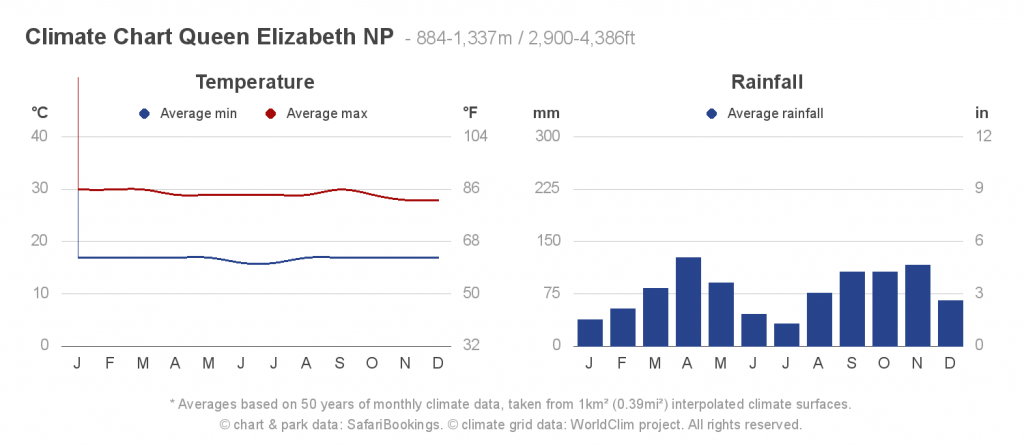Geography and climate – Queen Elizabeth National Park is situated inside the Albertine Rift Valley in western Uganda close to the Rwenzori Mountains. It covers an aggregate territory of 1,978 km2 of slopes, fields, woodland, and marsh. QENP is persistent with Parc National des Virunga in Congo and along these lines shapes one of the biggest ensured territory frameworks in eastern Africa, in the Greater Virunga Landscape. this national park has two rainy seasons, from March-May and from September-November, yet precipitation changes enormously inside the park. The most astounding is around 1,250 mm for every year and happens in the Maramagambo forest however just around 750 mm for every year falls in the zone along the Kazinga channel. This presumably comes about because of impedance with air course designs by the Rwenzoris toward the north, and the Kichwamba slope toward the east.

The territory around Queen Elizabeth National Park (QENP) has two articulated wet seasons, because of its area on the equator and the yearly movement of the Inter tropical Convergence Zone (ITCZ). The onset of the principal downpours is normally around late February for each of the four stations. The onset of the second rains is ordinarily around mid-August. There is no huge contrast in the term of the two stormy seasons at any station. There is similarly no noteworthy distinction in the measure of precipitation gotten amid the two stormy seasons at any station, with the exception of at Kitwe, where more precipitation happens amid the second rains than amid the primary downpours.

